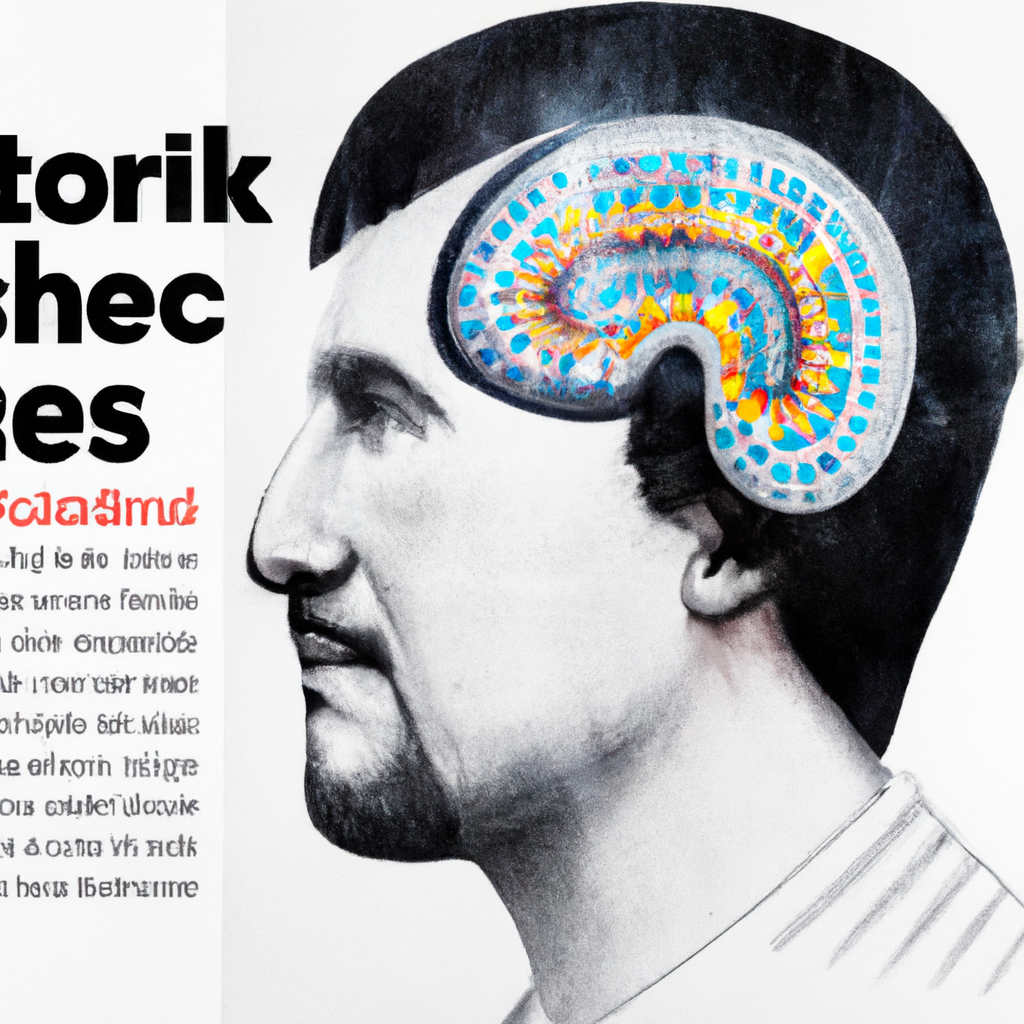Imagine a world where the boundaries of medicine are pushed to the extreme, where the seemingly impossible becomes a reality. In this brave new frontier, human head transplants have emerged as an intriguing possibility, captivating the minds of scientists and the general public alike. We find ourselves at the crossroads of medical ethics and groundbreaking science, where the potential to restore function and extend life raises both hope and concern. Join us as we explore this controversial realm, delving into the scientific advancements, ethical dilemmas, and implications that surround the world of human head transplants.

The History of Human Head Transplants
Early experiments in animal head transplants
The concept of a head transplant may seem like something out of science fiction, but its roots can be traced back to the early 20th century. In the 1900s, scientists began conducting experiments in animal head transplants. In 1908, French surgeon Alexis Carrel successfully performed a head transplant on a dog, connecting the head of one dog to the blood vessels of another. While the dog only survived for a short time, this experiment laid the foundation for future research in the field.
Progress in human head transplant research
Over the years, researchers and scientists have made significant progress in human head transplant research. One notable milestone occurred in 1970 when American neurosurgeon Robert White successfully transplanted the head of one monkey onto the body of another. This groundbreaking experiment demonstrated that it was possible to reconnect the blood supply and spinal cord, paving the way for potential human head transplants in the future.
First published proposal for a human head transplant
In 2013, Italian neurosurgeon Dr. Sergio Canavero published a proposal for the world’s first human head transplant. The proposal outlined a surgical procedure that would involve cooling the patient’s head and donor body to induce a state of deep hypothermia, connecting the blood vessels of the head to the new body, and then gradually reviving the patient. While Dr. Canavero’s proposal generated immense controversy and skepticism, it sparked renewed interest in the possibility of human head transplants.
The Surgical Procedure of a Head Transplant
The role of the surgeon
Performing a head transplant is an incredibly complex and delicate procedure that requires a highly skilled surgeon. The surgeon’s role is to oversee the entire operation, from planning and preparation to the actual transplantation process. They must have a deep understanding of neurosurgery, vascular surgery, and the intricacies of the human nervous system. Additionally, the surgeon must navigate ethical considerations and ensure the safety and well-being of the patient throughout the procedure.
Technologies involved in the operation
The successful execution of a head transplant relies heavily on advanced technologies. Surgical tools, such as precision scalpels and microscopes, are used to perform precise incisions and reconnect blood vessels. Imaging technologies, such as MRI and CT scans, assist in assessing the patient’s anatomy and planning the surgery. Additionally, monitoring devices, such as EEG and ECG machines, are essential for the continuous monitoring of brain and heart activity during the procedure.
Steps in the head transplant procedure
The head transplant procedure involves multiple complex steps. First, the patient’s head and the donor body are simultaneously cooled to induce hypothermia, slowing down cellular activity and reducing the need for oxygen. This ensures the preservation of the brain and other vital organs during the transplantation process. Next, the surgeon begins by severing the spinal cord and major blood vessels, then carefully connects the blood vessels, nerves, and spinal cord of the head to the new body. Once the connections are secure, the body is gradually warmed, allowing blood flow to be restored and the patient to regain consciousness.
The Ethical Debate Surrounding Head Transplants
Considering the definition of death
One of the central ethical debates surrounding head transplants revolves around the definition of death. Traditionally, death has been defined as the irreversible cessation of brain activity. However, with head transplants, the head of a living individual is transferred onto a new body, raising questions about whether the original body should be considered dead or if the transplant constitutes a continuation of life. This debate has profound implications for medical and legal definitions of death.
Issues of identity and personhood
Another ethical concern is the potential impact of head transplants on a person’s identity and sense of self. If a person’s head is transplanted onto a new body, do they retain their prior identity, or do they become a new individual entirely? This raises complex questions about the intersection of biology and consciousness, and the philosophical concepts of personhood and continuity of self. Resolving these issues is crucial in ensuring the transplant’s psychological and emotional well-being.
The question of informed consent
Informed consent is a cornerstone of medical ethics, and its importance is amplified in the context of head transplants. Consent from both the donor and recipient is essential, as the procedure carries significant risks and potential complications. However, given the experimental nature of head transplants, obtaining truly informed consent becomes more challenging. Striking a balance between advancing scientific knowledge and ensuring the ethical treatment of patients is a substantial ethical challenge that must be addressed.
Medical and Scientific Challenges in Head Transplants
Technical feasibility of the operation
One of the primary challenges in head transplants is the technical feasibility of the procedure. Connecting the spinal cord, blood vessels, and nerves is an intricate task that demands extreme precision. The complexity and delicate nature of these connections require advancements in surgical techniques, tools, and technologies to ensure a successful outcome.
Risks and potential complications
Like any major surgical procedure, head transplants come with inherent risks and potential complications. These include infections, blood clots, rejection of the transplanted head or body, and neurological complications. Additionally, the prolonged period of reduced blood flow during the transplantation process increases the risk of brain damage. Overcoming these risks and minimizing potential complications is a crucial area of focus in head transplant research.
The issue of body-rejection
The risk of the recipient’s immune system rejecting the transplanted body poses a significant challenge in head transplants. Immunosuppressive medications can help prevent rejection; however, they come with their own set of risks and side effects. Striking a balance between suppressing the immune system and preventing rejection while maintaining overall health and well-being is a complex medical challenge that must be overcome for the success of head transplants.

The Role of Bioethics in Human Head Transplants
The responsibilities of medical professionals
Bioethics plays a crucial role in guiding the decisions and actions of medical professionals involved in head transplants. They are responsible for considering and balancing the potential benefits and risks of the procedure, ensuring patient autonomy and informed consent, and upholding the principles of non-maleficence and beneficence. Ethical guidance and oversight are indispensable in addressing the multifaceted ethical implications of head transplants.
Public opinion’s role in ethical debates
Public opinion and perception have a significant impact on the ethical debates surrounding head transplants. Transparency, public education, and open dialogue are essential in shaping public understanding and ensuring that ethical decisions are made collectively. Engaging the public in the ethical discourse provides diverse perspectives and increases accountability in decision-making processes.
Ethical guidelines and regulations in different countries
Different countries have varying ethical guidelines and regulations regarding head transplants. Some countries have banned or placed strict limitations on the procedure, citing ethical concerns or the need for further research. Others have implemented regulations to allow limited experimental use. Establishing comprehensive, internationally recognized ethical guidelines and regulations is crucial in ensuring consistent and accountable practices in head transplant research and implementation.
Potential Benefits of Human Head Transplants
New possibilities for patients with terminal illnesses
Human head transplants present new possibilities for patients with terminal illnesses, particularly those affecting the body while sparing the brain. Conditions such as muscular dystrophy, spinal cord injuries, and certain types of cancer could potentially be addressed through head transplants, offering hope for improved quality of life and extended survival.
Advancements in neurology and brain science
The intricate nature of head transplants requires a deep understanding of neurology and brain science. The research and advancements made in this field as a result of head transplant research could have wide-ranging implications for neuroscience. It could lead to advancements in the treatment of neurological disorders, the mapping of the brain, and a deeper understanding of consciousness.
Potential to increase understanding of consciousness
The study of consciousness remains a fascinating and complex field. Human head transplants offer the potential to explore the relationship between the brain and consciousness in unprecedented ways. By observing the experiences and perceptions of individuals who have undergone head transplants, scientists may gain valuable insights into the nature and origins of consciousness, furthering our understanding of the human mind.

Potential Drawbacks and Risks of Human Head Transplants
Physical, emotional, and psychological risks
Undergoing a head transplant is an incredibly invasive and life-altering procedure. The physical risks include infections, nerve damage, and the potential for long-term complications in motor and sensory functions. Additionally, the emotional and psychological impact on both the donor and recipient cannot be overlooked. Adjusting to a new body or grappling with the loss of one’s original body can have profound psychological consequences that must be carefully addressed.
Financial implications and drain on medical resources
Head transplants are complex and resource-intensive procedures that require a significant allocation of medical resources. The extensive pre-operative planning, the surgical team, specialized equipment, and post-operative care all contribute to the financial burden. The cost of head transplants raises concerns about equity, as access to such procedures may be limited to those with significant financial means, exacerbating healthcare disparities.
Potential for misuse and exploitation
The potential for misuse and exploitation cannot be overlooked in the context of head transplants. Unscrupulous individuals or organizations may exploit the desperation of patients with terminal illnesses, offering false hope or engaging in unethical practices. Robust ethical oversight, stringent regulations, and a strong emphasis on patient advocacy are essential in safeguarding against potential exploitation and ensuring the ethical implementation of head transplants.
Legal Aspects of Human Head Transplants
Existing laws and regulations in different countries
The legal landscape regarding head transplants varies from country to country. Some countries have established concrete laws and regulations governing the research and clinical use of head transplants, while others have yet to address the procedure explicitly. Legal frameworks must be carefully crafted to balance the need for scientific advancement with the protection of patient rights and safety.
Legal dilemmas and conflicts surrounding the procedure
Head transplants give rise to a multitude of legal dilemmas and conflicts. Questions surrounding consent, liability, and the determination of post-transplant legal status pose significant challenges. For example, how would legal responsibility be assigned in the event of a medical complication or adverse outcome? Addressing these complex legal issues is crucial in ensuring the equitable and appropriate implementation of head transplants.
The role of policy makers
Policy makers play a pivotal role in shaping the legal landscape surrounding head transplants. They are responsible for enacting legislation and regulations that balance the potential benefits of head transplants with the ethical and societal implications. Engaging in thorough ethical and scientific reviews and incorporating expert opinions are essential in developing sound policies that facilitate responsible research and clinical use of head transplants.

The Future of Head Transplants
Technological advancements and their potential impact
The field of head transplants stands to benefit from ongoing technological advancements. Improved surgical techniques, advances in regenerative medicine, and the development of more sophisticated neuroimaging tools could enhance the safety and success rates of head transplants. Additionally, emerging technologies such as virtual reality and robotics may play a role in the rehabilitation and integration of the transplanted individual with their new body.
Future ethical and societal implications
As head transplants continue to be explored and refined, ethical and societal implications will evolve. Questions surrounding identity, consent, and the allocation of resources will require ongoing dialogue and examination. Public education, robust ethical oversight, and interdisciplinary collaboration between researchers, medical professionals, ethicists, and policymakers will be crucial in addressing these complex issues.
Predictions from medical professionals and ethicists
Medical professionals and ethicists have offered a range of predictions regarding the future of head transplants. Some believe that with further advancements in technology and understanding, head transplants could become a routine medical procedure. Others maintain that the risks and ethical concerns associated with head transplants are too significant to overcome. Identifying areas of consensus, continuing research, and engaging in open and informed discussions will help shape the future trajectory of head transplants.
Case Studies and Testimonials
Stories from patients
While human head transplants remain in the realm of experimental research, several patients have shared their perspectives and experiences. These stories offer insights into the physical, emotional, and psychological challenges facing individuals who have undergone head transplants. They also underline the critical need for comprehensive pre-operative counseling, appropriate post-operative support, and long-term psychological care.
Opinions from medical professionals
Medical professionals play a critical role in guiding the ethical and practical aspects of head transplants. The opinions and experiences of surgeons, neurologists, and other experts provide valuable insights into the potential benefits, risks, and considerations associated with the procedure. Their expertise contributes to ongoing research, policy development, and public education.
Lessons from failed and successful experiments
Failed and successful experiments in head transplants offer valuable lessons for the future of the procedure. Identifying the reasons behind unsuccessful attempts provides crucial insight into potential pitfalls and areas for improvement. Conversely, successful cases shed light on successful surgical techniques and strategies for minimizing complications. Learning from both successes and failures will help refine the procedure and guide future research endeavors.











